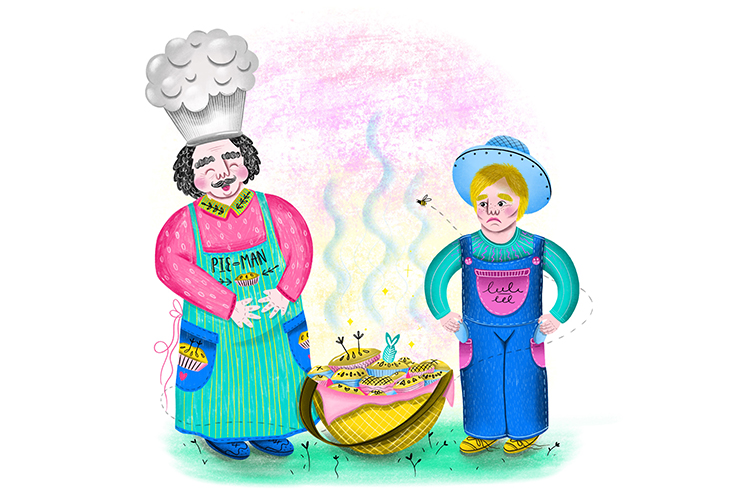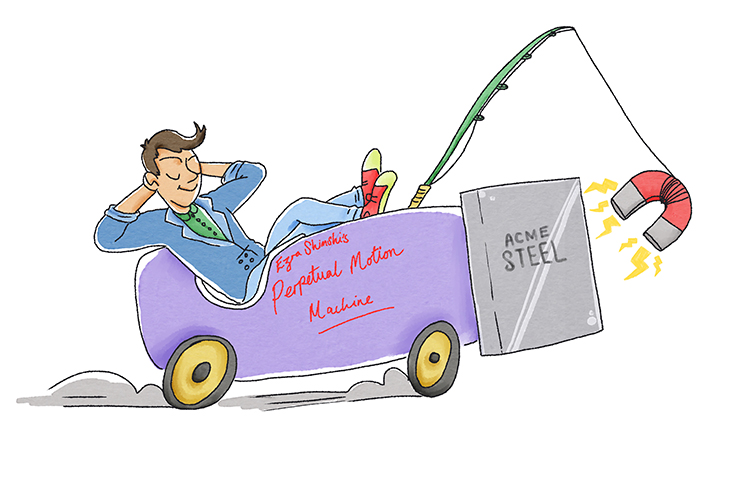The four forms or aspects of tenses
Each tense – past, present and future – can have one of four different forms. These forms are often referred to as aspects.
The three forms or aspects are:
- Simple
- Continuous
- Perfect
- Perfect continuous
NOTE: The form or aspect known as "continuous" can also be referred to as "progressive". In English, there is absolutely no difference between "continuous" and "progressive" aspects – they are the same thing.
The following picture and story should help you remember that the four aspects of each tense are simple, continuous, perfect and perfect continuous:

Simple Simon met a pieman going to the fair. The pieman told Simon his pies had been subject to a continuous improvement programme, so were perfect. But Simple Simon was perfectly, continuously (perfect continuous) broke due a gambling habit, so couldn’t buy a pie.
OR use the following to aid your memory of the four aspects:

If a simple, continuous, perpetual motion system could be perfected, a perfect continuous source of energy could be harnessed.
So we have:
- Past simple
- Past continuous
- Past perfect
- Past perfect continuous
- Present simple
- Present continuous
- Present perfect
- Present perfect continuous
- Future simple
- Future continuous
- Future perfect
- Future perfect continuous
Altogether, that makes twelve tenses! But how do you recognise them?
To show you how they work, we've provided examples on the following three pages.




